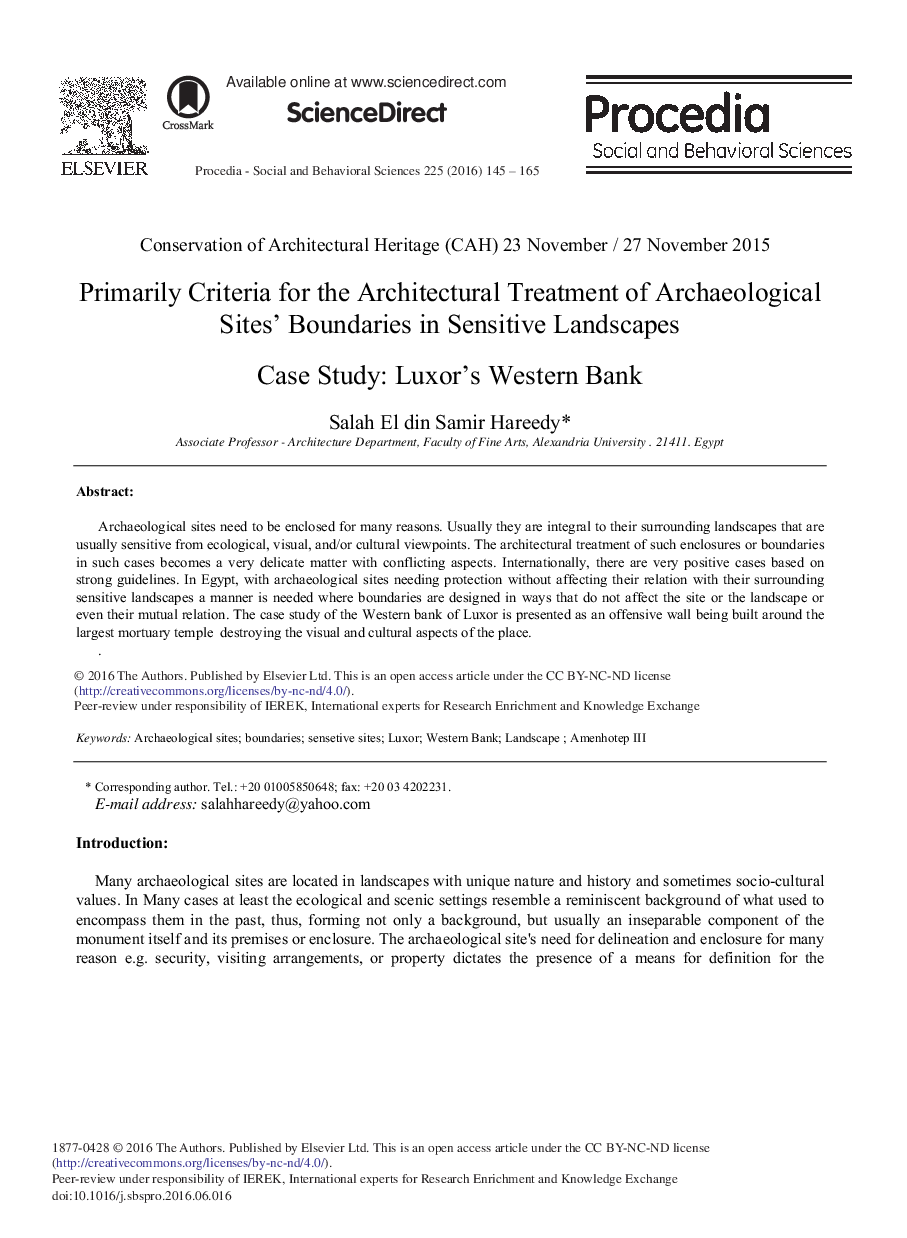| کد مقاله | کد نشریه | سال انتشار | مقاله انگلیسی | نسخه تمام متن |
|---|---|---|---|---|
| 1107642 | 1488334 | 2016 | 21 صفحه PDF | دانلود رایگان |
Archaeological sites need to be enclosed for many reasons. Usually they are integral to their surrounding landscapes that are usually sensitive from ecological, visual, and/or cultural viewpoints. The architectural treatment of such enclosures or boundaries in such cases becomes a very delicate matter with conflicting aspects. Internationally, there are very positive cases based on strong guidelines. In Egypt, with archaeological sites needing protection without affecting their relation with their surrounding sensitive landscapes a manner is needed where boundaries are designed in ways that do not affect the site or the landscape or even their mutual relation. The case study of the Western bank of Luxor is presented as an offensive wall being built around the largest mortuary temple destroying the visual and cultural aspects of the place.
Journal: Procedia - Social and Behavioral Sciences - Volume 225, 14 July 2016, Pages 145–165
